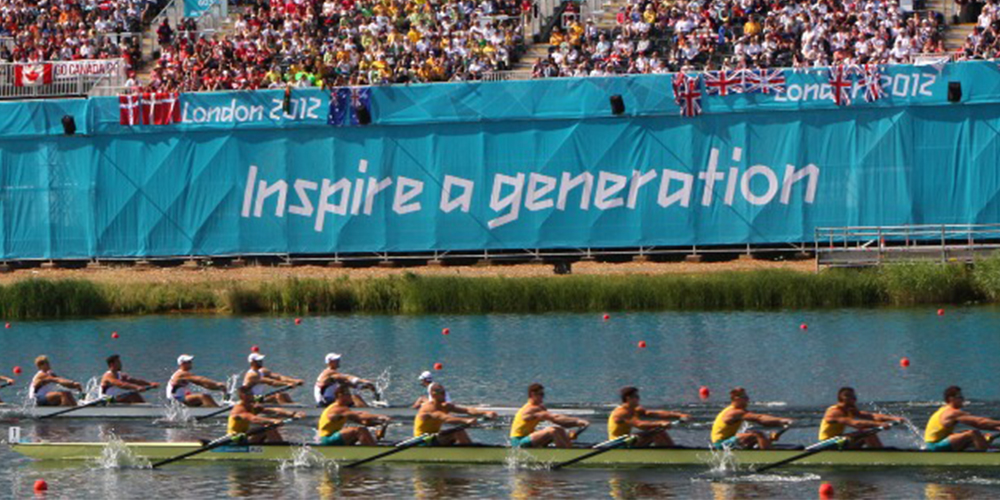
This article, published on the 10th anniversary of London 2012, asks questions about the way we treat mega sport events and elite athletes. At the end is a link to...
The purpose of physical education has long been contested. This is expertly documented and the claims assessed in Bailey et al’s seminal summary paper (2009). However, it could be argued that the purpose is not debated or debatable. If we examine policy documents from around the world and over time, there is actually a very consistent theme – equipping young people with the tools they need to be active and remain active. For a range of complex reasons, physical educators have always justified the existence of the subject by jumping onto other agendas. These agendas are always a reflection of the broader societal and educational priorities. These priorities often take on the guise of commonsense, after all, who wouldn’t want young people to be more resilient? However, if we ask deeper questions such as who produces and prioritises the agenda and why, which young people is it aimed at and who benefits or suffers as a result, the veneer of commonsense soon fades.
Over the last few years, we have seen physical education justify its existence by claiming relevance to being part of the solution to a range of these crises – child obesity, young people’s mental wellbeing, Covid recovery etc. I would argue that this chameleon-like advocacy serves to diminish rather than boost the subject’s status and leads to much confusion that plays out with children receiving wildly varied experiences. The claims pull the subject away from it’s universal purpose to such an extent that they shape curriculum and pedagogy and therefore impact on young people’s experiences and their emerging and developing relationship with physical activity.
Over the last few years we have seen physical education and youth sport claim to be able to impact transferable life skills. A number of well-meaning organisations and practitioners have invested significant time and energy into working up models and advocating for this version of PE. This process usually starts with a justified critique of the subject and an attempt to produce a version that is better, more inclusive and more relevant. None of this is new. Kirk (2010) brings together volumes of critical literature from the previous 30 years that he sums up with the (somewhat difficult) ‘idea of the idea of PE’. The idea of transferable life skills is not new either. Indeed, the original justification for the very first appearance of organised sport in the elite public schools in England during the mid-Victorian era, was that it ‘builds character’, character that was required to lead the institutions of the British Empire (military, commerce, politics). Historical continuity is clearly evident by the very same reference being inserted into the 2014 National Curriculum Purpose of Study statement produced by politicians who attended the very same schools, a full 199 years after Webb Ellis supposedly picked the ball up on the playing fields of Rugby School.
As there is growing appetite for the notion of using PE (and Youth Sport) to develop these transferable life skills, it seems opportune to pose some genuine questions around many of the assumptions that underpin this thinking.
To clarify: transferable life skills refer to a range of ‘things’ that are taught in PE with the explicit and express aim of them being used and applied to support young people in other areas of their lives like their academic work, their relationships or their post school careers. The term ‘holistic’ is often used. However, this is also confusing, as again holistic PE has been referred to over many years but its meaning seems to have changed. Peter Arnold (1979) developed his notion of learning IN, THROUGH and ABOUT movement, but he was explicitly clear that this learning was framed to initiate young people into a whole range of practical pursuits such as sport and dance which form a significant and valued part of our culture. This seems to relate very clearly to the universal goal of helping young people find a place for movement or physical activity in their lives. To do this, it has long been recognised that young people need learning content and experience that goes beyond the technical (physical). When I trained to teach we used to refer to the physical, social, cognitive and psychological domains. A modern incarnation of this might be Head, Heart, Hand or the model I used in my work at Kingston University - MAT: Movement, Affective/Attitudinal and Thinking. These all represent a version of PE in which success can and should be evidenced through (personal) progress in one or more domains. The point to emphasise here is that learning is equipping young people to make sense of movement and want to move more. Why they might move and what they learn from movement are possible outcomes but not drivers e.g. if they grow up with a love of movement, they may be healthier or have higher self-esteem that carries into their working lives but that’s not the reason for teaching PE and as such, it is not the explicit aim (or in Sinek speak, the why).
Ronkainen et al (2020) question the use of the word skills. They highlight that this umbrella word is used to cover a diverse range of concepts, traits, abilities, competencies etc, ranging from learning to like oneself to goal setting, leadership and, well, almost anything that is deemed to be desirable. Using the word skill implies that you can insert a concept like resilience into a curriculum as if it can be learnt in the same way that a forward roll can be. They also ask valid questions about who is selecting these ‘skills’ and why these skills are chosen above others. Coakley (2016) supports this by highlighting the absence of critical thinking. He points out that many of the ‘skills’ reflect and perpetuate an individualistic view of the world that young people are taught are essential to ‘get on’ in life - a life that they are told is shaped by competing and ‘being better than’ rather than working collectively, empathetically and justly. In other words, what version of a good life do life skills prepare young people for and are PE teachers sufficiently qualified to both interrogate these assumptions and then deliver on them. How many, for example, have completed courses in career advice and employability or even healthy eating and nutrition, for that matter, which is supposedly closer to home. I, for one, have not. Or how many have had the time, support and opportunity to really understand and question the thinking behind the ubiquitous discourse around grit and resilience by reading the likes of Duckworth, Milkman or Dweck. Does this lack of preparedness only serve to add to the confusion around PE?
However, perhaps the most challenging questions pertain to claims about transferability. There is plenty of debate around notions of transferable movement skills. Proponents of ecological pedagogy advocate that all movement learning is context specific. Matthew Syed’s (2010) account of why he, as an elite table tennis player with excellent reaction speeds was unable to even make contact with a tennis ball when served by a pro tennis player, despite the fact that the ball was travelling much further, is a good example of this. However, advocates of PE for life skills, suggest that the ‘things’ learnt in PE will stick and be successfully applied in vastly different contexts. There is a tendency amongst sport enthusiasts to view it through an evangelical lens. Coakley suggests that this leads to ‘unlimited expectations’. He goes on to suggest that these claims are at best 'naïve’ until robust, longitudinal studies suggest otherwise. He expands on this theme in this podcast in which he states that having researched youth sport for four decades, he has found no evidence at all that these sorts of skills transfer from sport into other areas of life.
Related to transferability is the notion of causation which is so often confused with correlation. When the great and the good recount how the things they learnt in PE and Sport have shaped their lives (time management, determination, goal setting, leadership, confidence etc), it is perfectly feasible that the support, opportunities and privileges that they benefited from helped them develop these attributes, which they then carried into sport. Furthermore, it’s worth pointing out that elite sports people who also attain highly academically are still viewed as the exception such as Dr Anna Kiesenhofer. This suggests that transferability does not happen by osmosis. Whether it can happen as a result of well structured, explicit curricular, remains a point of contention. Agnew and Pill (2016) suggest that if it is to happen, staff need to be extremely well trained and supported.
The Bradford-Hill criteria were used to prove that smoking causes lung cancer and are now applied to examine causal relationships. If we apply them to examine PE and a ‘life skill’ like resilience, we might ask the following questions:
This version of the relationship between sport, PE and life is much messier and perhaps, therefore, less appealing when presenting to certain audiences who we think want to hear another story. This raises the uncomfortable question as to why we might not have the confidence to back ourselves and our work without having to do so, wittingly or unwittingly, via other people’s agendas.
I have written and presented elsewhere on the need for us to ‘stay in our lane’. There is so much more for us to learn about effectively supporting all young people to find meaning and reap benefits from sport and physical activity. We owe it to ourselves to base our practice on robust research and evidence. To ask people to change lanes is potentially harmful to teachers and may well be detrimental for the young people we work with as illustrated by this concluding question…Would you classify an inactive 16 year old with a weak relationship to physical activity but a good work ethic, excellent time management, bucket loads of resilience, fine leadership skills, as being ‘successful in PE’?
References
Agnew, D., and Pill, S. (2016) I think it’s going to save lives. Sport Administrator Perspectives on Youth Development Through Sport. The Sports Journal 48
Arnold, P.J. (1979) Meaning in Movement, sport and physical education. London, Heinemann
Bailey, R. P., Armour, K., Kirk, D., Jess, M., Pickup, I. & Sandford, R. (2009) The educational benefits claimed for physical education and school sport: An academic review, Research Papers in Education , 24(1), 1–27.
Coakley, J. (2016). Positive youth development through sport: Myths, beliefs, and realities. In N. L. Holt (Ed.), Positive youth development through sport (pp. 21–33). Routledge/Taylor & Francis Group. https://doi.org/10.4324/9781315709499-3
Ronkainen N., Aggerholm K., Ryba T., & Allen- Collinson J. (2020): Learning in sport: from life skills to existential learning, Sport, Education and Society, DOI: 10.1080/13573322.2020.1712655
Syed, M. (2010) Bounce, Fourth Estate; London
Way of Champions Podcast with Jay Coakley episode 138 available at https://podcasts.apple.com/ng/podcast/138-is-sport-essentially-good-or-is-that-wishful-thinking/id1223779199?i=1000455181182

This article, published on the 10th anniversary of London 2012, asks questions about the way we treat mega sport events and elite athletes. At the end is a link to...

In 1969 Muska Mosston published his continuum of teaching styles. These equipped PE teachers with 11 distinct styles that supported different learning processes and...